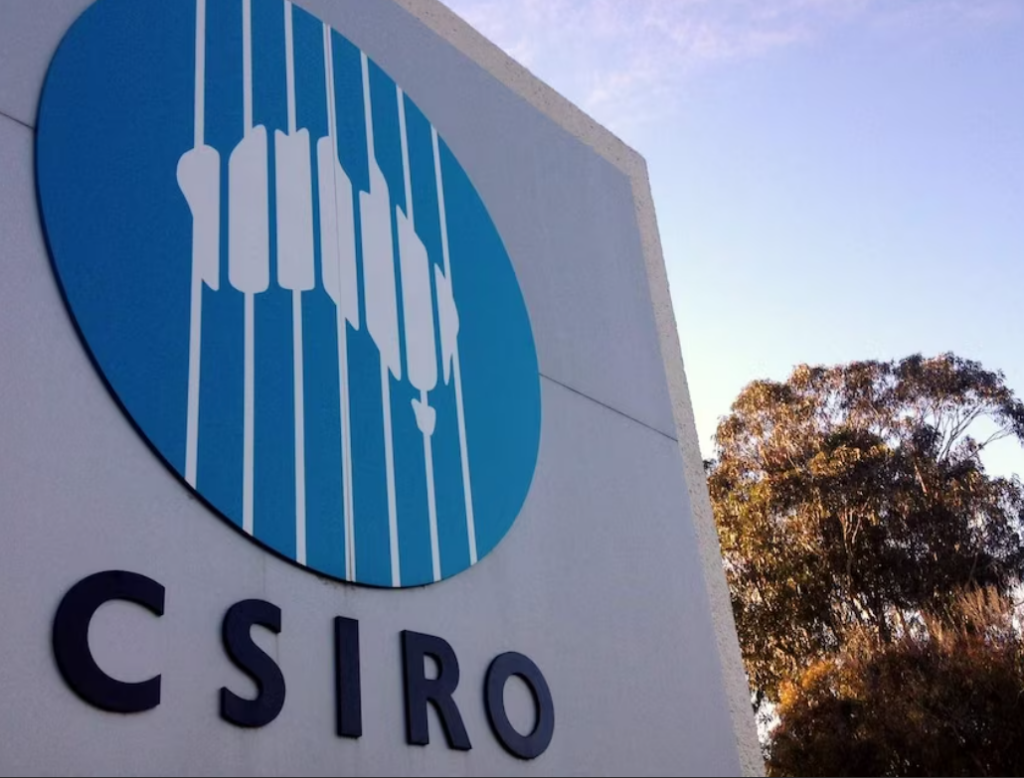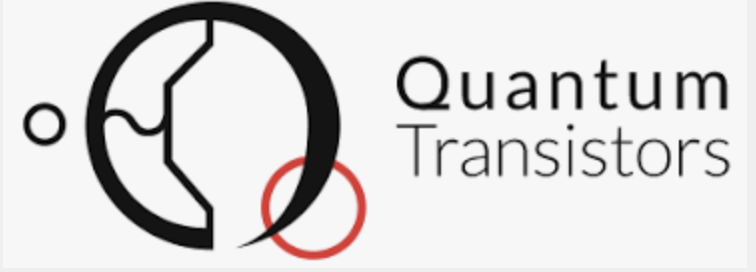
From The Mind Of Wolfgang Paul
What’s an ion? Is it a bird, a plane? I don’t think so. It’s a lot more than that.
For the dissolute barbarians out there, ions are simply charged atomic particles. These ‘ions’, are — in essence — singular, suspended little things in the whole of free space, using electromagnetic fields for their existence.
It’s ‘electric, you see, and ‘magnetic’. Two forces against each other: force versus resistance. I know it’s elementary, like Sherlock, but these charged ‘things’ become what are known as qubits, the transportation of quantum information science in 2020.
It all came from the work of German physicist Wolfgang Paul. His electrodynamic ion trap, which he invented in the 1950s, is the technology used these days in trapped ion quantum computing. So great was his research that he won the Nobel Prize in physics in 1989.
Whether or not trapped-ion technology is the way forward is anyone’s guess — chances are, if you’re an investor or employee in Rigetti Computing (superconducting quantum computer), D-Wave Systems (superconducting quantum annealer) or PsiQuantum (photonic quantum computer), the answer would be a resounding ‘no’.

And it’s okay. Each to their own.
If I’ve left anyone out in this list, a big sorry, but here at TQD, we write about the ones making waves, the movers and shakers, now. We’re sure as time’s arrow proves (or disproves) the efficacy of this technological approach, more startups and big companies will adopt the trapped-ion way of doing things, but currently, we’ve got four major players.
There is no rank of merit — like most of the other lists we’ve done over time, they’re in alphabetical order, just to be safe, just to show how impartial we are as a team.
Alpine Quantum Technologies (AQT)

The first company on our list was founded in Innsbruck, Austria in 2018 by co-founders Rainer Blatt, Thomas Monz, and Peter Zoller. Working on a general-purpose quantum information processor, Alpine Quantum Technologies’ (AQT) ultimate goal is to commercialize a quantum computer to be used cross-scale in different industries.
Global experts in their field, the team was the first of its kind to achieve a controlled-NOT gate operation. Using the scalable trapped-ion approach, AQT guarantees incomparable performance, excellent qubit control and proven optical networkability.
So, how does all this work?
By applying electric fields, single charged atoms (ions) are trapped within vacuum chambers. The qubit — which is the ion — is then controlled and measured using accurately timed laser pulses.
So what can this do according to AQT?
In 2016, using a small-scale quantum computer with five trapped calcium ions, CEO Monz et al implemented a scalable version of Shor’s algorithm. This is only one of their achievements.
AQT’s solutions can solve intractable problems with its unique Alpine QT Stack, shown below:
AQT’s current trapped-ion research (which includes the Pine ceramic mounted linear Paul trap, capable of trapping >20 ions) can be used in such disciplines that require precision instruments like in spectroscopy, clocks or quantum information.
Responsible for all this is the expert team with years of academic and business experience behind them.
Leading AQT is founder and CEO Thomas Monz. With a Ph.D. in physics from Leopold-Franzens Universität Innsbruck, Monz has also worked at Scottish QC company M Squared Lasers as a scientific product specialist, a senior research scientist at Leopold-Franzens Universität Innsbruck while holding, since 2018, a position on the World Economic Forum’s Global Future Council on Quantum Computing.
This spring, AQT entered into a global partnership with software specialist HQS Quantum Simulation. Combining AQT’s hardware and HQS’s software, respectively, the duo hopes to move into new territory of development and success.
Honeywell Quantum Solutions

This next company needs no introduction. Based in Charlotte, North Carolina, Honeywell Quantum Solutions — part of Honeywell International Inc, an American publicly traded conglomerate — was founded in 1906 and for the greater part of its history has been more famous for manufacturing control systems for businesses, homes, and the aviation industry.
Since those times, however, things have changed. Now, the multinational has shifted its focus somewhat to quantum information science by establishing its ‘Quantum Solutions’ wing. Led by president Tony Uttley, he is in charge of the general business performance. Uttley has decades of experience in operations management, project engineering and consulting for the likes of NASA and The Boston Consulting Group.
“The beauty of quantum computing is that once you reach a certain level of accuracy, every time you add a qubit you double the computational capacity. So as the quantum computer scales exponentially, you can scale your problem set exponentially.”
— Tony Uttley
With a crack team of engineers, scientists and technicians, Honeywell Quantum Solutions has managed to build what is ‘currently the highest performing quantum computer available’.
Uttley sees three stages or eras in how quantum computers will develop. Firstly we have what he calls the ‘emergent’ era, which is followed by the ‘classically impractical’ era. The final one the ‘classically impossible’ era.
The emergent era is a kind of testing ground, to see what works and what doesn’t in regard to software and algorithm development.
Uttley sees a time frame of 18 months to two years to break into the second stage of the ‘classically impractical’ era, which by definition means traditional computers or supercomputers would be unable to perform a task as well as a quantum computer for a number of reasons, e.g. energy efficiency/cost factors.
The last phase, the ‘classically impossible’ era, is where — according to Uttley — quantum computers really come into their own — it would take for infinity (or close to that) for even the best supercomputers on the planet to do the computations that a quantum computer could do.
From that, go figure.
But what about the technology?
As of summer 2020, Honeywell can boast its quantum computer has a quantum volume of 64 (quantum volume is a metric that measures the performance of a quantum computer’s capabilities and error rates), making it twice as powerful as the next best thing in the industry, the 32 of IBM’s offering.
Metrics aside, it’s pretty impressive.
There is little doubt Uttley and his team of specialists will be on the cutting edge of the industry along with Google, IBM and Microsoft, but smaller trapped-ion concerns like Alpine Quantum Technologies and others out there (which I’ll be mentioning soon) — with a nimbler plan of action, a far greater entrepreneurial spirit and the ability to pivot at a whim — Honeywell Quantum Solutions may have to have eyes in the back of its head and its work very much cut out.
IonQ

When it comes to a startup G.O.A.T in the QC space, IonQ has little to no competition (with the exception of D-Wave Systems and Rigetti Computing). Founded by Christopher Monroe and Jungsang Kim in 2015 with $2M in seed funding, the company is now led by Peter Chapman, its CEO who started his programming career as a fresh-faced sixteen-year-old when nobody knew what programming was.
The following year, in 2016, they raised $20M. In 2019, $55M flowed into the IonQ bank account.
So, all told, in five years, it has gone from a nascent wannabe to one of the most respected companies in the industry.
Most of that comes off of the reputation of IonQ’s two founders, respectively — Monroe has decades of research in trapped-ion technology at the University of Maryland while his cofounder Jungsang Kim at Duke has his fair share of research credentials, too.
Atoms make better quantum computers.
— IonQ
I wrote — maybe embarrassingly to say now — a fanboy post about Monroe late last year for TQD. In it, I described his very early impact (the mid-1990s) in the QC industry when only a select few quantum physicists and the eminent David Deutsch knew what was going on. Now that everybody has jumped on the bandwagon, maybe people realize his impact.
With 52 employees as of 2020 and three active computers working overtime to make our future brighter and so much more enlightened, IonQ will be one of the leaders in trapped-ion technology in the QC sphere. This will be helped, for sure, by the $82M it has raised in VC funding since 2017.
Universal Quantum

‘Can we build a million-qubit quantum computer?’
The question is definitely 18th-century British navy hardtack, but Universal Quantum obviously believes it can.
Founded in Brighton, UK, in 2018 by Winfried Hensinger and Sebastian Weidt, as a spinout from the University of Sussex’s Ion Quantum Technology Group, the startup’s philosophy is based on six technology pillars:
Mild-cooling technology, trapped-ion qubits, electronic quantum gates, silicon microchip modules, electric field link modularity, and, finally, a practical engineering focus. Seeing as the spotlight of this story is trapped-ion technology, we’ll leave the impact of the other five for another day and post.
Universal Quantum utilizes the power of individually charged atoms (the ions) as qubits (and has developed an algorithm to achieve this). Levitating — Houdini-like — above the face surface of the silicon microchip, and being existentially identical, easily manipulated, as well as isolated from all external forces, Hensinger and his team believe it is ‘the most mature quantum computing technology’ out there. Proof of this lies in decoherence times, error rates for single/two-qubit gates and general connectivity. Having developed an algorithm, the startup wants to move to the next level now.
With ambitions to build a quantum computer that can be of use in the pharmaceutical, financial and other industries, Universal Quantum desires to become innovators that lead from the front in trapped-ion technology.
CEO of Universal Quantum is Sebastian Weidt. With a Ph.D. in quantum information technology from the University of Sussex, Weidt has consultancy experience and research to fill up his resume.
A professor of quantum technologies at the University of Sussex for more than fifteen years, chief scientist at Universal Quantum, Winfried Hensinger, has the honour of producing the first ion-trap microchip in the world. To add to that impressive achievement, he also came up with (and his team) a seminal approach to quantum computing using trapped ions ‘where voltages applied to a quantum computer microchip can replace billions of laser beams which would have been required in previous proposals on how to build a quantum computer.’
Like the other three companies mentioned, Universal Quantum is adamant the trapped-ion technology they have at hand will revolutionize the industry. To help them on their way, of course, is funding.
In June this year, the startup raised an impressive $3.6M in a Seed round with six VC investors involved.
With money in the pocket, an academic with the world’s first ion-trap microchip under his belt, the trapped ions all trapped, Hensinger and Weidt are well on their way to building what the world wants in the future.
Dear readers, the information and details here are not exhaustive. Maybe I’ve missed something out, or incorrectly placed some factual information. If I have, it was not intentional.
As we move deeper into this fascinating decade, QC — in whatever way it will develop — is here to stay. And as it grows into the defining technology of tomorrow, TQD will be there to document it like a quantum Herodotus, watching all its triumphs and defeats with a magnifying glass, analyzing the ethical implications of the industry, too
For more market insights, check out our latest quantum computing news here.



















